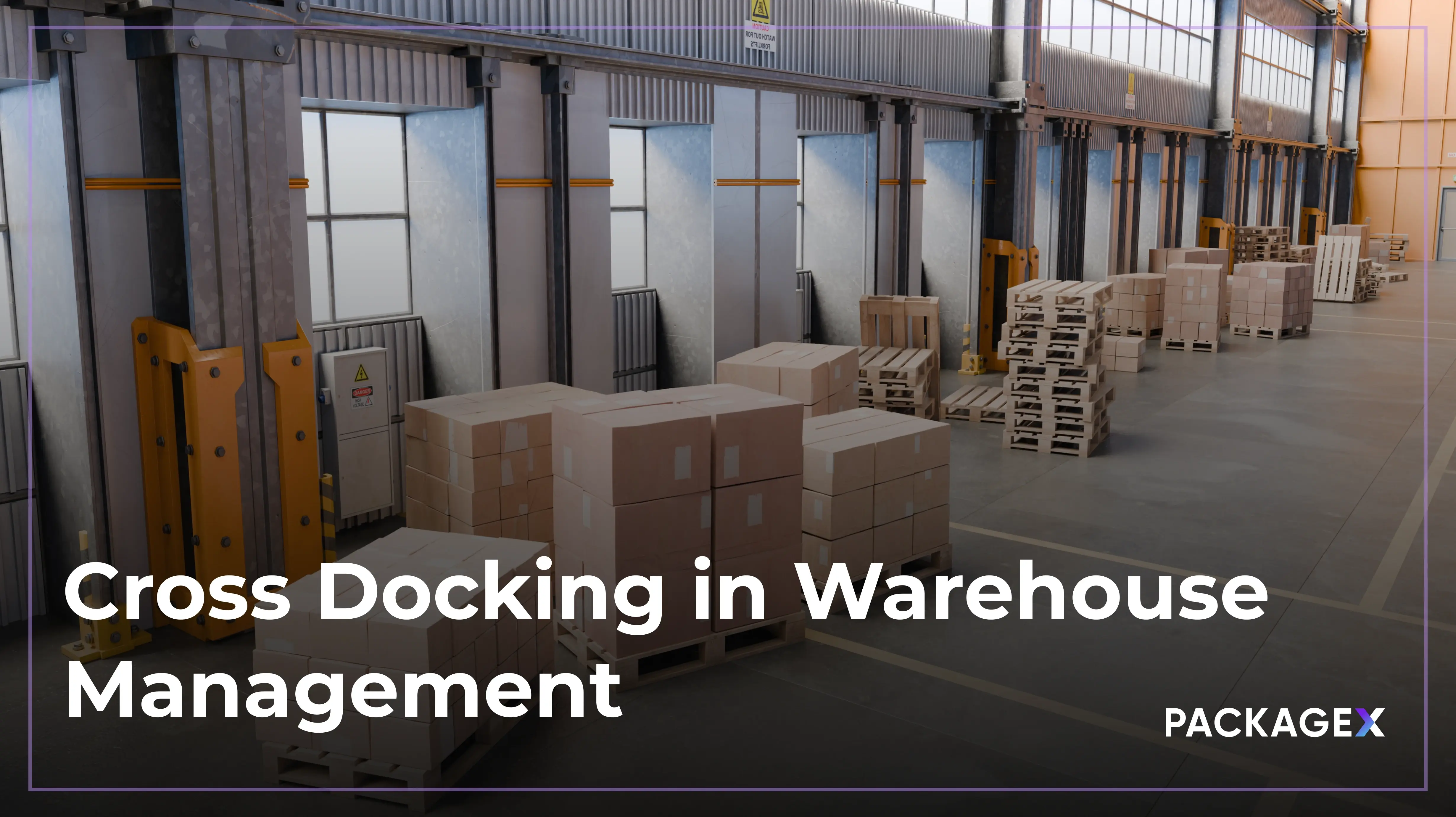Every e-commerce and logistics company dreams of delivering the perfect order. But even with the best products and smooth delivery, returns are inevitable. The average e-commerce return rate sits between 16 and 18%, showing how common it is for customers to send items back after purchase.
In 2025, reverse logistics has become one of the most critical parts of e-commerce. It is no longer just about getting products to customers but also managing how they come back. Poorly handled returns can slow down operations, crowd warehouses, and chip away at profit margins.
The cost of returns stretches far beyond refunds. Each item triggers a chain of tasks that include inspection, restocking, and communication with the customer. Without a proper returns management process, even the most efficient businesses can lose valuable time.
This growing challenge has created new opportunities. The global returns management software market is projected to rise from USD 12.38 billion to USD 26.38 billion by 2035. These stats highlight that automated systems are becoming essential for modern retail.
In this blog, we’ll discuss what returns management is, how it works, and why it matters for e-commerce businesses looking to stay efficient.
What is Returns Management?
Returns management is the process a company uses after a customer starts a return. It covers everything from the customer sending the item back to the business inspecting it. It also decides whether to restock, refurbish, recycle, or issue a refund. In short, it keeps customers happy and inventory accurate.
It is related to but not identical with reverse logistics and returns management. Reverse logistics focuses on the physical movement of goods back through the supply chain. Returns management covers the customer touchpoints, policy rules, inspection, and the last-mile delivery.
For example, an in-house team might tag, inspect, and restock items on a small line. A 3PL warehouse has dedicated returns processing lanes and automated workflows. To speed up recovery and reduce costs.
Online returns management relies on a returns management system to give customers easy portals and clearer tracking.
Why Returns Management Matters for E-Commerce Success?
A well-managed returns process does more than solve customer problems. It drives long-term e-commerce success. In a world where shoppers expect convenience, returns management has become a major part of how they judge a brand.
Returns as a Customer Experience Driver
A seamless return builds confidence. When customers know they can easily send something back, they are more likely to make a purchase. Research shows that 92% of shoppers buy again from retailers who offer easy returns. Transparent policies and quick refunds turn what could be a negative interaction into a moment of trust.
Financial and Operational Impacts of Inefficient Returns
Poor returns handling quietly eats into profits. Unplanned reverse logistics costs, inventory mismanagement, and delayed refunds increase operational strain. Businesses using optimized 3PL returns management systems save time and reduce manual work. They automate tracking, restocking, and customer communication.
Returns as a Competitive Differentiator
In competitive e-commerce logistics, how a company handles returns can set it apart. Quick resolutions, simple instructions, and proactive communication improve brand perception. A reliable 3PL returns partner helps businesses manage complex logistics. While also maintaining customer trust.
Sustainability Through Smart Reverse Logistics
Modern customers care about sustainability. Efficient 3PL reverse logistics allows companies to refurbish or recycle returned products instead of sending them to landfills. This reduces waste and shows customers that the brand values responsibility as much as revenue.
[video:https://www.youtube.com/watch?v=xqzig0LY7OU]
How does the Returns Management Process Work?
The returns management process follows a clear and structured path. Each step connects the customer, warehouse, and logistics teams to keep the experience smooth and efficient.
1. Customer initiates the return
It all starts when the customer requests to send a product back. This may happen through a website portal, email, or chat. A simple, clear process at this stage improves customer trust and reduces delays.
2. Verification and approval
The retailer checks the request against the return policy. Once approved, a return label or instructions are sent. This part ensures only eligible items move forward in the returns process flow.
3. Product arrives at the returns processing center or 3PL return warehouse
When the product is shipped back, it reaches a returns processing center or a third-party logistics (3PL) return warehouse. Here, teams receive, sort, and track the returned goods as part of the larger warehouse returns workflow.
4. Inspection, restocking, or recycling
Each item is inspected to see if it can be resold, refurbished, or recycled. Some are repaired for resale, while others are responsibly disposed of. This is where returns processing meets sustainability and cost recovery.
5. Data feedback and improvement
Every return adds to a valuable data set. Businesses analyze trends, track recurring issues, and refine their reverse logistics operations. This insight helps optimize 3PL returns fulfillment and future performance.
Challenges in Returns Fulfillment and Reverse Logistics
Returns are a natural part of e-commerce, but managing them efficiently is where most businesses struggle. The process can quickly turn from a customer service task into a costly operational challenge.
High return rates and shipping costs
With e-commerce return rates averaging around 16–18%, the cost of repackaging and reshipping products adds up fast. Each return not only impacts margins but also ties up warehouse space and labor.
Inefficient 3PL returns workflows
Many retailers rely on third-party logistics (3PL) providers to handle returns fulfillment. However, when systems aren’t aligned, bottlenecks appear. Delays in scanning, sorting, and restocking returned items can slow the entire supply chain.
Limited visibility in the return warehouse operations
Without real-time tracking, businesses often have little insight into where returned items are. Or how long they’ve been sitting in a return warehouse. This lack of transparency leads to lost inventory and slower inventory resale cycles.
Manual errors and poor integration
A major e-commerce return bottleneck is disconnected software. When your e-commerce platform doesn’t sync with your returns management solution, teams waste time on manual updates. This increases the chance of errors.
Return fraud and quality control issues
Return fraud prevention remains a growing concern. Some customers exploit lenient policies, returning used or counterfeit items. Without proper inspection workflows, these products can re-enter circulation, hurting brand trust.
Key Strategies to Improve Your Returns Management System
Improving your returns management system doesn’t have to be complicated. Small, strategic changes can make a big difference in how efficiently your business handles returns.
Here are five practical ways to get started.
1. Simplify your returns policy
A clear and simple returns policy builds trust. Use straightforward language that explains what customers can return, how long they have, and how refunds work. The fewer steps there are, the less confusion and frustration for both sides. Easy-to-understand policies often lead to fewer complaints and faster resolutions.
2. Use data to predict and reduce returns
Analyze your return data to find trends. Are certain items being returned more often? Maybe the product descriptions or sizing guides need updating. Data-driven insights help you reduce unnecessary returns and improve your returns management strategies.
3. Partner with a reliable 3PL return warehouse
Working with experienced third-party logistics providers simplifies the process. A good 3PL returns management partner can handle reverse logistics. It can help with quality checks and restocking faster than most in-house setups. These partnerships free your team to focus on customer service and operations.
4. Invest in scalable returns management software
Modern inventory management solutions automate many manual steps. From creating return labels to tracking returned items. Investing in software that integrates with your e-commerce system allows efficient returns management. This results in more accurate processes and fewer errors.
5. Train your team for efficiency
Even the best systems fail without trained people behind them. Make sure your warehouse and customer service teams understand how to process returns accurately. Regular training encourages consistency and keeps your operations smooth.
The Future of Returns Management in E-Commerce
Here’s what’s shaping the future of returns management in e-commerce.
1. Rise of AI-Driven and predictive returns management
- AI scanning in returns management is changing how retailers handle product returns.
- Predictive returns analytics helps brands anticipate which products are most likely to be returned.
- For example, if customers frequently return a specific clothing size, AI tools can identify the pattern and prompt better sizing charts or product descriptions.
- This reduces costs and improves overall customer satisfaction.
2. Integration with sustainability and circular logistics
- The shift toward sustainable logistics is redefining reverse logistics and returns management.
- Companies are embracing circular returns management. Consider repairing, replenishing, or recycling products instead of discarding them.
- This reduces environmental impact while strengthening brand reputation.
- Consumers now prefer retailers that demonstrate eco-friendly values through smarter returns practices.
3. Expansion of 3PL return warehouse infrastructure
- The global growth of 3PL return warehouse networks is making returns processing faster and more cost-effective.
- Specialized returns fulfillment centers now handle sorting, inspecting, and repackaging goods for resale.
- This expansion supports global e-commerce operations and shortens turnaround times.
4. Automation redefining supply chain efficiency
- Returns management automation is streamlining every step of the supply chain.
- Smart scanners, tracking systems, and integrated returns management software allow real-time visibility from customer request to warehouse processing.
- Automation minimizes errors, speeds up refunds, and improves warehouse efficiency.
How Package X Optimizes the Returns Management Process?
Here’s how PackageX can help:
Automated returns processing
Package X automates every step of the returns management process from label scanning to warehouse updates. The system handles approvals, notifications, and data syncing without manual input. This automated returns processing helps businesses cut handling time and reduce errors.
Simplified communication and real-time tracking
Returns involve multiple players. Such as customers, logistics partners, and third-party logistics (3PL) return warehouses. Package X connects them all through a single dashboard. This ensures clear communication and real-time returns tracking. Teams can see where each product is in the cycle. Whether it’s in transit, under inspection, or restocked.
Seamless integrations
The platform integrates easily with leading e-commerce tools and major warehouse systems. This creates a unified view of reverse logistics and returns management. This improves coordination between online stores and fulfillment centers.
Cost reduction through analytics
By combining automation with actionable insights, Package X helps businesses lower the cost of returns and optimize warehouse efficiency. With smarter data and faster communication, it transforms returns fulfillment into a streamlined, customer-friendly experience.
FAQs
1. What is the return process in logistics?
The return process in logistics, also known as reverse logistics, involves moving products back from customers to the seller or warehouse. It includes steps like approval, shipment, inspection, and restocking. A well-managed returns process helps reduce costs and improve supply chain efficiency.
2. What is a return in e-commerce?
A return in e-commerce occurs when a customer sends back a purchased item due to issues such as size, damage, or dissatisfaction. The process is managed through an online returns system that tracks approvals, refunds, and product recovery to ensure customer satisfaction.
3. Why is managing returns important?
Managing returns is vital for keeping e-commerce operations efficient and customers happy. A clear and automated returns management process reduces refund delays, prevents warehouse congestion, and protects profit margins while building long-term brand trust.



%20Process%20Flow.webp)
